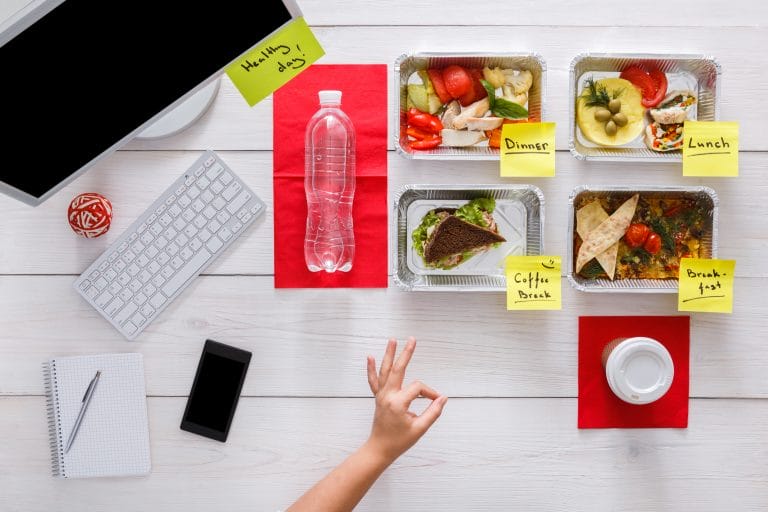Ever wonder why you crave sugar yet feel terrible after eating a cookie? Well, wonder no more! Sugar can be found in everything from fruits to candy, yet not all sugar is the same. Foods containing natural sugars offer nutrients that keep your body healthy, provide fast yet stable energy, and keep your metabolism stable. Fruits, for instance, offer essential nutrients such as potassium, vitamin C and folate. Added sugars, on the other hand, are harmful in large quantities.
Getting your sugars from natural sources like apples, bananas, low-fat milk, Greek yogurt, carrots, beets, and sweet potatoes will satisfy your body’s need for sugar while maintaining your blood glucose levels for longer periods versus the sugar rush, and subsequent crash, received from added sugars found in sugary breakfast cereals, candy and chocolate bars, jams and jellies, dairy desserts, and puddings. Let’s start with understanding the difference between natural and added sugars, and how to identify them.
Why Natural Sugars are Good
Fruits and dairy contain fructose and lactose, natural sugar that is digested slower than added sugar and keeps your metabolism stable over time. Sugars found naturally in food are more than enough to sustain your body. Natural sugars are processed more slowly, meaning your blood glucose level stays elevated for a longer period.
How Added Sugars Hurt You
Sugar is used by the body as a source of quick energy. When it is not used, your body will store it for later. Added sugars are typically processed quickly, either immediately used for energy or sent directly to the liver for fat storage. Your blood glucose level drops quickly after eating added sugars, known as a sugar crash, that leaves you hungry, irritable, and usually craving another pickup. When this happens, you may not be able to make smart choices about what and how much to eat which could contribute to weight gain.
So, how can you keep your total sugar intake at a healthy level and focus on giving your body the nutrients it needs without the negative side effects of sugar overload? First, you can get informed! Food labels contain a list of sugars in foods. While it may look confusing at first, there are a few simple tricks you can use to understand the hidden sugars.
- First, know that most processed foods have added sugars, even foods you think are healthy! So, understand what the packaging really means:
- Sugar-free means that there are less than 0.5 grams of sugar per serving
- Reduced sugar or less sugar means that an item contains at least 25% less sugars per serving compared to the standard serving size of the traditional variety
- No added sugars or without added sugars means that no sugars or sugar-containing ingredients were added during processing
- Second, check for hidden sugars disguised in the ingredient lists. Items such as brown sugar, corn sweeter, corn syrup, fruit juice concentrates, high-fructose corn syrup, invert sugar, malt sugar, molasses, raw sugar, sugar, sugar molecules ending in “ose”, syrup, and honey are all important ingredients to check. While it may seem that honey is a better sugar than high-fructose corn syrup, the truth is that all added sugars are alike, so be careful not to brush aside the ingredient list.
- Third, know what a healthy amount of sugar looks like. It is recommended that women eat less than 24 grams of added sugar per day, while men should eat no more than 36 grams of added sugar per day. For comparison, the average American consumes over 70 grams of added sugar each day.
Once you understand how your body processes sugar, and how to identify it, you can build healthy behaviors. Of course, you can always try to cut out the sugars cold turkey, but if that seems a bit overwhelming, consider the following:
- Budget your calories by prioritizing health and essential calories and nutrients first. Start with low-fat and no-sugar-added foods before adding in sugars to your meals.
- Understand the discretionary calorie budget. The higher your activity level, the more calories you have at your disposal. That doesn’t mean, however, that you should go crazy with the sugar. Work to limit the number of added sugars to no more than half of your daily discretionary calories, or the calories you have left over after eating your nutritious options. Consider pairing sugars with proteins or fats so your blood glucose levels won’t spike as quickly.
- Consider food swaps instead of added sugar
- Swap blueberry flavored yogurt for plain yogurt with fresh blueberries added
- Use avocado as a condiment instead of mayonnaise
- Salsa instead of ketchup
- Oil and vinegar instead of processed salad dressing
- Coconut water instead of sports drinks
- Sparkling water rather than soda
- Cinnamon in coffee instead of sugar
- Eat berries or other fruit as dessert instead of berry-flavored ice cream bars
- Drink water! Not only can you cut out a large chunk of added sugars by ditching the sugary drinks, but you can also curb your appetite and boost metabolism!
With a few simple tweaks, you can reduce the number of added sugars and give your body the nutrients it needs to function well for a long time to come.



